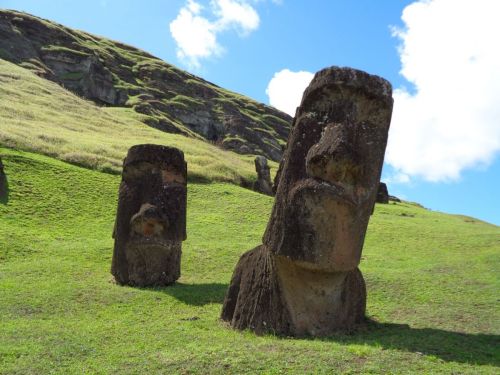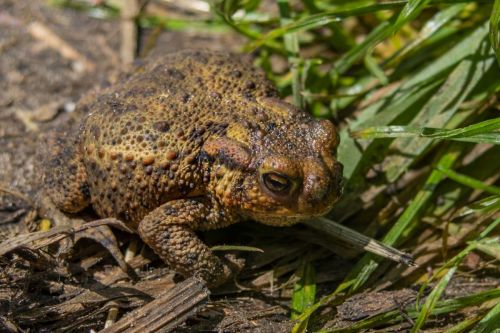Charles Darwin was one of the most influential figures in human history. The co-author of the theory of evolution, Alfred Russel Wallace, declared that Darwin brought about a greater revolution in human thought in a quarter of a century than any man before. He gave the world a new conception of the world and of life and showed how to combine all the elements together into a coherent whole, revolutionising all natural history.
He was honoured for his scientific achievements with a funeral in Westminster Abbey.
He was an English naturalist, geologist and biologist, author of the theory of evolution, which is considered a fundamental concept in science.
He came from a wealthy family of Robert Darwin, a physician and financier, and Susannah Wedgwood - he was the fifth of six children. His grandfather was Erasmus Darwin, naturalist, physician, inventor and poet, who died seven years before Charles was born.
Charles probably inherited his love of nature from his grandfather. Erasmus Darwin firmly believed that humans, like animals or plants, inherit certain characteristic, acquired traits. He often used the word 'evolution', which appears in his poetic-philosophical work The Temple of Nature.
Charles was only nine years old at the time of his mother's death, but by then his father had already decided his fate. Robert Darwin was a successful and popular physician, and he chose this career path for his son as well. Having assumed full responsibility for Charles, he steered him toward medicine, although Darwin had shown an interest in natural history and collecting even as a young boy.
A year later, he and his brother Erasmus began attending a nearby Anglican school in Shrewsbury.
It was all due to a group he joined while studying at Cambridge between 1828 and 1831. There, a group of students formed the Gourmet Club, a society that ate the meat of animals not found in traditional cuisine.
Charles was a member of the group until it came to eating roasted owl. After tasting it, he spat it out, referring to it as so disgusting that it was "hard to describe," much to the displeasure of the club members.
This was dictated by the lack of access to traditional foods while travelling in South American countries.
He was forced to eat a variety of dishes made from the meat of exotic species, such as the puma, whose meat he ate in Patagonia, or the nandu, later known as Darwin's ostrich, or turtles in the Galapagos Islands.
He focused on the natural sciences, was enthralled by the language and logic of the English theologian, philosopher and representative of the so-called natural theology, William Paley, but also engaged in equestrian sports and hunting. He befriended botany professor John Henslow and met many leading naturalists who were concerned with natural theology in their scientific work.
In the final examinations he placed tenth out of 178 people. The reading of numerous naturalistic works, especially Paley's "Natural Theology", in which the author attempted to prove the existence of God through the works of nature and explained the processes of adaptation in nature through the intervention of God, who worked through the laws of nature, sparked in him the desire to make his own discoveries that would deepen his knowledge of nature.
He and some colleagues intended to travel to Tenerife to study nature in the tropics. His father was against the trip, but at the urging of his brother-in-law, he agreed.
Descriptions of some of his finds were published in James Francis Stephens' Illustrations of British Entomology.
Charles set out on the ship HMS Beagle on an expedition to map the coast of South America.
During the expedition, the young naturalist Darwin was able to see the landscapes of Madeira, the Cape Verde Islands, and West Africa, and as far as the Tierra del Fuego. Every time the ship docked, Darwin spent most of his time ashore conducting geological surveys and collecting material for natural history studies.
He took careful notes and sent the collected samples and letters to Cambridge from time to time. Since he had little experience in collecting specimens of various kinds, he sent them for later evaluation by specialists. He also sent a copy of his journal for his family.
However, this did not prevent him from conducting research on marine invertebrates, especially plankton - most of his zoological records dealt with marine invertebrates.
On his twenty-fifth birthday (February 12, 1834), the ship's captain, Robert FitzRoy, named the newly discovered highest mountain in the Tierra del Fuego Archipelago a Mount Darvin.
During his travels, he witnessed a slave hunt in West Africa, which he described as "barbaric and shocking."
He was enthralled by the rainforests of Brazil, excitedly discovered the mysteries of Patagonia, and expeditions deep into the forests of the Amazon gave him the opportunity to learn about the social, political, and anthropological aspects of the lives of the indigenous people and the colonizers.
High in the Andes, he saw shells and numerous tree fossils exposed by the tremors. From this he concluded that sea level was once higher than it is today. Among the fossils, he found remnants of trees that once grew on a sand dunes on the coast.
This observation led him to the theory that as the land rose, oceanic islands were submerged and coral reefs grew around them, forming atolls.
In 1835 Darwin arrived in the Galapagos Islands, where he spent two months. There he discovered a family of Mimid birds that were related to the species he had encountered in Chile. He observed that they differed markedly in appearance on each of the islands of the archipelago. He concluded that these birds had a common ancestor, but evolved into different species in different environments (the so-called Darwin's finches).
From his trip to the Galapagos, Darwin brought back to England specimens of 186 species (97 of which were previously unknown), as well as detailed geological descriptions of the islands.
Despite the observation of these birds in the Galapagos Islands, the founder of the theory of evolution himself admitted that the observation of artificial selection of breeding pigeons contributed to its formulation.
The publication of Darwin's voyage diary was met with great interest by the British.
On two slips of paper he wrote down brief thoughts for and against marriage. He divided the sheets into two columns, one titled "to marry" and the other " not to marry."
Among the points in favor were:
List of cons included, for example:
In the end, the profit and loss calculus pushed him toward marriage.
Based on his own collections and travel notes, following the scientific methodology of the progressive geologist Charles Lyell (who held that the formation of the Earth and its crust was influenced solely by physical and chemical processes, and who rejected all creationist views), Darwin drew conclusions about the changes that species had to undergo in order to survive in a changing natural environment.
At the same time, another British biologist and naturalist, Alfred Russel Wallace, 14 years younger than Darwin, who was conducting research in the Amazon, Malaysia, and Indonesia, came to almost identical conclusions and developed a competing theory of natural selection (Darwin was unaware of this).
The Darwins had ten children. Two died in infancy, and their beloved daughter Annie died at the age of ten. Her death had a devastating effect on her parents.
Charles was a very caring father who loved his children very much, and when one of them became ill, he feared that the illness might be the result of inbreeding (the close family bond between the parents).
Of the children who survived, George, Francis, and Horace became prominent scientists (an astronomer, botanist, and civil engineer). Son Leonard became a soldier, politician, and economist.
He is believed to have suffered from Down syndrome, which at that time had not yet been medically described.
From the clinical syndromes described, modern physicians concluded that Darwin suffered from three painful diseases:
Darwin's records included a reference to a painful insect bite during his stay in Argentina, after which he suffered a prolonged fever associated with chills (the insect was probably infected with Trypanosoma cruzi).
In recognition of his great contributions to science, Queen Victoria expressed the wish that the great scientist Charles Darwin be buried in a state funeral. The scientist's body was buried in Westminster Abbey next to the tomb of astronomer and chemist John Frederick William Herschel and next to Sir Isaac Newton. The funeral, which took place on April 26, was attended by thousands of people.
Only four 19th-century Britons who were not members of the royal family were laid to rest in Westminster Abbey.













